Nature Knows and Psionic Success
God provides
Easy Ways to Support Your Endocannabinoid System (Without Taking CBD)
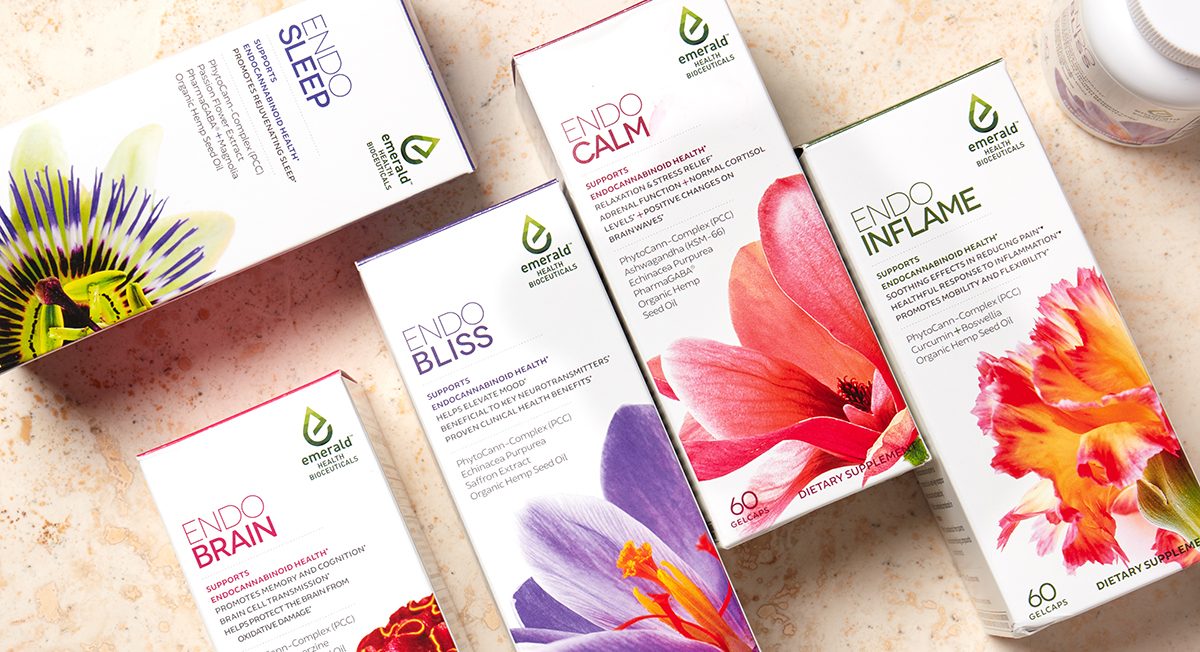
Today we’re adding endocannabinoid health to your list of must-know wellness terms. Why? Because your endocannabinoid system is your body’s largest neurotransmitter, delivering important messages to other systems, cells, tissues, and organs—keeping them all in balance. The system is comprised of receptors found throughout your organs and glands (more on that below!), and they’re doing their important job of neurotransmitting messages throughout your body (even right now as you’re reading this article) to keep you feeling good. We wanted to know more about harnessing their potential, so we reached out to the experts at Emerald Health Bioceuticals to get the lowdown. The Endocannabinoid System Your endocannabinoid system (also known as ECS) is your body’s largest neurotransmitter, and was was discovered in the 1980s by Dr. Raphael Mechoulam, a professor of medical chemistry at Hebrew University. The system is made up of cannabinoid receptors— found in vital organs and glands, like the brain, skin, stomach, lungs, and heart. These receptors are CB1 (found in your central nervous system) and CB2 (housed in your gut, immune cells, and peripheral nervous system), and they’re known for affecting everything from your central nervous system and sleep patterns to immunity and memory. “Taking care of your ECS is one the the most important things you can do for your health!” said Emerald Health Bioceuticals CEO Jade Beutler. “It may be new in concept, but we’re certain that endocannabinoid health will be just as important as heart or brain health in the next few years. CBD has brought this important system into the spotlight, but CBD is just the tip of the iceberg when it comes to activating this system. When your ECS is working at full potential, all of your bodily systems will, too.” If all the scientific terms are hard to remember, think […]
6 Amazing Benefits of Drinking Water on an Empty Stomach

Benefits of Drinking Water on an Empty Stomach When you get up within the morning, you may have probably gone a full seven to eight hours while not a drink of water — perhaps even longer if you’re not one to require a couple of swigs before bed. Realistically, which means we have a tendency to go close to simple fraction of the day while not drinking any fluids. What’s even worse is that the majority folks don’t drink enough water even once they are awake. They’re at work, distracted, chugging back occasional. Considering as several as seventy 5% of US citizens suffer from chronic dehydration , there are several common symptoms that go together with an absence of water consumption. Whether or not you’re feeling weak, tired, bound or suffer from headaches, additional water may well be a simple fix. Today, i need to introduce you to the benefits of drinking water on an empty stomach — that tends to be very first thing within the morning. Japanese water medical care When you think about “therapy,” beverage might not come back to mind. However, for those that don’t drink enough water on a each day, you may be astounded at what proportion higher you’ll be able to feel. Being a necessary, basic component, you ought to be drinking a mean of 8 to 10 glasses daily. In today’s trendy society, it’s believed that a lot of ailments begin with an unhealthy, toxin-ridden gut. That’s why Japanese ancient medication recommends water medical care. By drinking water on an empty stomach, very first thing within the morning, you’ll be able to cleanse your abdomen and support digestion. This is aforementioned to assist aid weight loss , constipation, organic process problems, brain perform, urinary organ health, skin health and then far […]
10 surprising things caffeine does to your body and mind

Some of us hardly feel human without a cup (or three) of coffee in the morning. Caffeine fuels our days and helps us connect with others. Where would the world be without cafés, coffee breaks, and the perfect espresso after dinner? But you might not have realised that your coffee habit has a real impact on your brain. From memory performance to the risk of age-related cognitive decline, caffeine could be changing our brains in a variety of fascinating ways. Here’s a primer on the way caffeine affects your brain. First of all, caffeine isn’t only found in coffee. Besides the obvious slew of energy drinks and supplements on the market, caffeine can be found in a lot of sneaky places. Dark chocolate, ice cream, fruit sodas, some protein bars, and weight-loss pills are all unexpected sources of caffeine . Even some products like breath fresheners and packaged sunflower seeds have added caffeine. Think you’re safe with decaf? Shockingly, even it has caffeine . Caffeine is actually a psychoactive drug. In fact, it’s the most widely used psychoactive substance in the world – a study found that at least 80% of the adult population consumes it. According to the World Health Organisation, a psychoactive drug is a substance that alters brain function in a way that results in temporary changes to behaviour, mood, and perception. Other psychoactive drugs include heroin, alcohol, nicotine, and marijuana. Besides being psychoactive, studies show that caffeine is a stimulant that affects your central nervous system. That coffee buzz is actually a type of drug high. Caffeine tricks your brain into thinking it’s not tired. According to Smithsonian Magazine, caffeine is structurally similar to a biochemical called adenosine. This chemical, among other things, is responsible for making us sleepy. When you have a cup of […]
Surprising Health Benefits of Nitro Coffee (Factors to Consider)
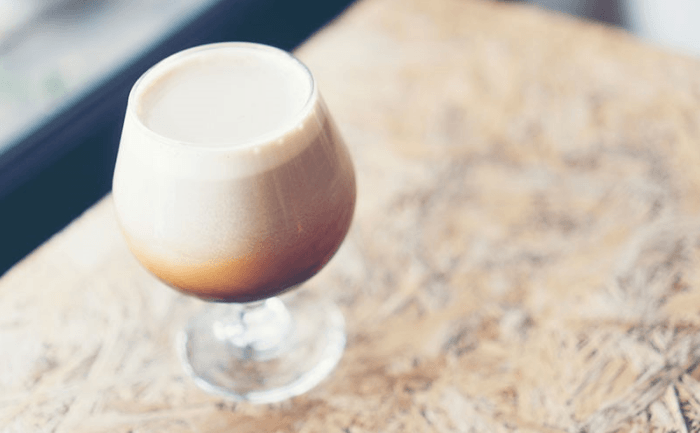
If you are a hardcore coffee lover then you are probably familiar with nitro coffee. Nitro coffee is a trendy new drink that is infused with nitrogen, a type of colorless, odorless gas that makes up 78% of the air we breathe. The concept of infusing beverages with gas is not new at all; the technique is still being used today. Regular soda drinks, beer, and other carbonated drinks, for instance, are infused with carbon dioxide, another type of odorless and colorless gas. So what makes nitro coffee different from your regular brew? Infusing cold coffee with nitrogen changes the drink’s texture and flavor. The brew takes on a silkier, frothier consistency and a softer, but more robust flavor that wakes up the senses. The way nitro coffee is served creates the drink distinct foamy head and creamy top. The brew is often served on tap, like regular beer, and never over ice. The tap dispenses the drink via a pressurized valve, which creates the brew’s silky, creamy texture. You might add sugar or cream to drip coffee but nitro coffee’s natural sweetness means there is no need to add sweeteners or cream to the drink at all. Nitro coffee is the better drink if you are fighting to stay awake. Artisanal coffee drinks, even traditional black coffee, are often over diluted with water or milk so that the coffee loses its caffeine potency. Nitro coffees are usually brewed stronger so that the caffeine is more concentrated. Since they are served cold, they will also be more refreshing and thirst quenching. This will give you a healthy caffeine boost and will perk you up much faster than sipping on a cup of regular coffee. Now that you know the fast facts about nitro coffee, let’s take a look at […]
ADHD and ADD are FAKE disorders stemming from bad schooling practices, HFCS and artificial food coloring

( Natural News ) Attention-deficit disorders are defined as brain disorders marked by ongoing patterns of inattention, hyperactivity, and impulsivity, to an extent that it interferes with development and functioning. Symptoms include wandering off task, difficulty sustaining focus, disorganization, defiance, constant movement, fidgeting, tapping, talking, and the inability to delay immediate gratification. Sounds like every adult who’s jacked up on coffee while stuck sitting on a hard chair at some boring work meeting while playing on their smart devices and completely disconnected from the speaker and the content being presented. Today’s elementary and secondary school curriculum and testing is still based on memorizing rote facts (which are mostly inaccurate), filling in the “blanks,” taking multiple choice quizzes and tests, and raising hands to answer questions posed by the teachers. Meanwhile, most school breakfasts and lunches (including what most kids bring from home) are chock full of processed foods that contain high fructose corn syrup, artificial coloring, artificial flavoring, concentrated salts, pesticides, and fluoride (think of the water fountains). Children and teens are consuming pop tarts, sugar-laden cereals, soda and energy drinks without knowing the detrimental behavior effects. Plus, kids eat candy throughout the day, some coming from home and the rest from teachers who use genetically modified treats as rewards for “good behavior.” How ironic. What year did Christopher Columbus arrive in America, and what are the long division steps for dividing 2,437 by 389? Exactly. Who cares. First off, let’s address what kids are learning in school these days, and how most of the curriculum is cannon fodder, including outdated “skills” and “strategies” that don’t even apply to the real world in any form at all. Unless you’re appearing on the Jeopardy game show, trivia doesn’t matter at all. As for long division, nobody needs to know that […]
A member of the forget-me-not flower family found to prevent neurodegenerative disorders
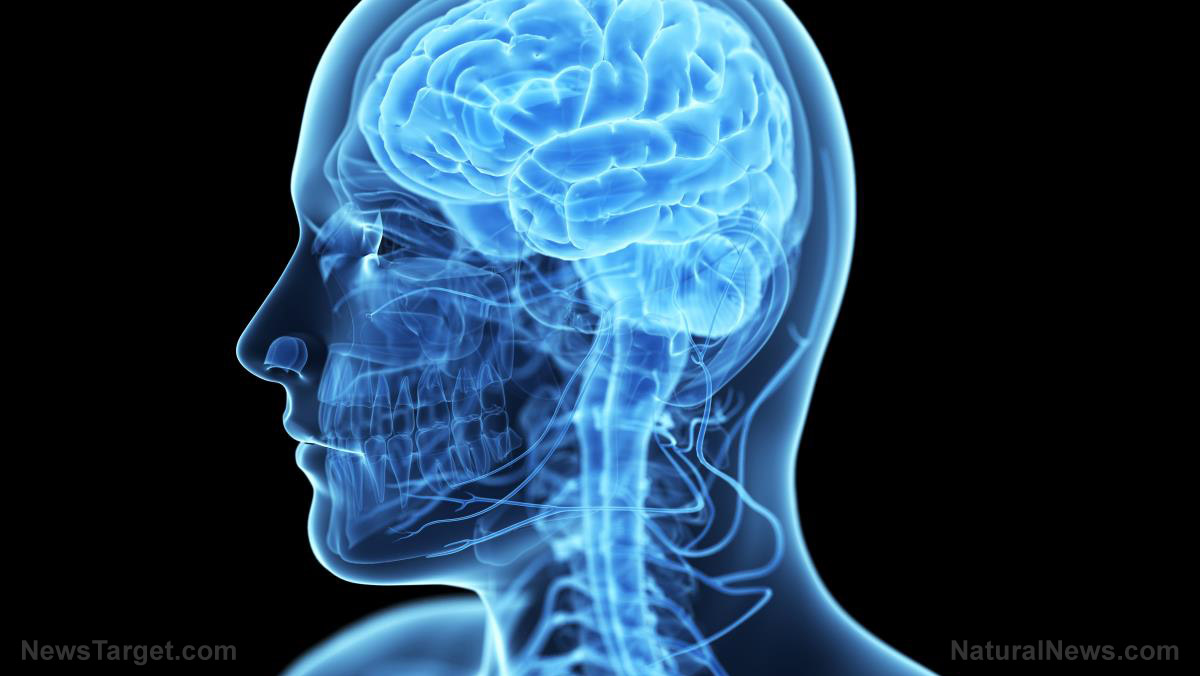
( Natural News ) Researchers from Pakistan have found that Nonea micrantha , a plant native to northern Africa and the Iberian Penninsula, contains bioactive compounds that can potentially be used to treat neurodegenerative diseases. The team arrived at this finding by studying the plant’s ability to inhibit the breakdown of acetylcholine — a chemical messenger in the brain linked to Alzheimer’s disease, as well as its antioxidant properties. People with neurodegenerative diseases experience a loss of neurons . As a result, some functions of the body — including moving, talking, and breathing — are impaired. Many people are familiar with some of the conditions that fall under this category (such as Parkinson’s disease, Alzheimer’s disease, amnesia, and dementia); however, the exact cause of these diseases remains unclear. For some, a likely suspect in the onset of these conditions is oxidative stress. The condition is usually caused by an imbalance in the number of free radicals and antioxidants in the body. High amounts of free radicals, such as reactive oxygen species (ROS), are harmful, given that the brain heavily relies on oxygen and is full of lipid cells — making it particularly vulnerable to oxidative stress. In addition, those with neurodegenerative disorders have altered levels of acetylcholine , which is essential for brain functions, such as memory, learning, focus, and muscle contraction. For the study, the team obtained a methol extract from N. micrantha , which they further processed to get hexane, chloroform, ethyl acetate, aqueous, and crude saponin fractions. The derivatives were then examined for its physicochemical properties. The results identified 37 compounds in the plant, and among these were substances with known antioxidant, anti-diabetes, anti-ulcer, and antimicrobial properties. In terms of its anticholinesterase properties, the hexane fraction of N. micrantha exhibited the highest inhibitory activity. Similar results […]
Technology and social media are feeding addictive behaviors and mental illness in society

( Natural News ) Smart phones and tablets have become a cancerous growth in our lives – never leaving us, feeding off our essence, and sucking away our attention, life, and energy. Social media is like an aggressive form of brain cancer, attaching to our mind, addicting us to cheap dopamine rushes, replacing human interaction with a digital façade of living. Stealing away our time, technology has become a disease that infiltrates our mental and social health, leaving us depressed, anxious, worried, envious, arrogant, and socially isolated. What we type and text to others causes over-thinking, rumination, and misunderstanding. The way we respond with type and text can be misinterpreted, leading to social strain in relationships. Digital communication lacks the natural flow of body language, eye contact, touch, voice inflection, tone, and real-life rapport. Accustomed to digital communication, people lose their ability to have adult conversations. This hurts everyone’s ability to work together, discuss ideas, solve problems, and overcome multi-faceted challenges. Popular social media platforms prey on human weaknesses On Facebook, the pursuit of likes and comments can become an addicting sensation. When the attention fails to come in, the Facebook user may feel unheard or undesirable. When the user sees their friends getting more likes, they may perceive other people having a better life than they do, leading to depressed feelings. (Related: Former Facebook exec: “ Social media is ripping society apart. “) On Twitter, communication is limited to short bursts. These bursts encourage people to engage in divisive language that is used in inflammatory ways and is easily misunderstood. Twitter is used to build a “following” which becomes a high-school-esque popularity contest that easily inflates egos and gives a platform to the most annoying ones in the bunch. 100% organic essential oil sets now available for your […]
5G tech fast-tracked to get pushed into our homes by next year

( Natural News ) For tech junkies, the arrival of 5G can’t come soon enough — but for all those concerned about environmental and public health, it’s a soon-to-be health disaster looming overhead. As the wireless industry competes to see who can roll out a 5G network the fastest, it seems the days of 5G are coming closer and closer, with the latest estimates suggesting that 5G will be available in homes as soon as 2019 — if it’s not in your area already. While 5G is credited with speeds ten times faster than current 4G networks, and is expected to usher in a new generation of self-driving cars, concerns about the health risks of 5G are mounting. The next generation of the internet may be lauded for unbridled data access, but health advocates are wary of the budding new technology — and for many good reasons. 5G will unleash substantially higher amounts of electromagnetic radiation, and it will be virtually inescapable. What could go wrong? What is 5G? For many, the promise of faster internet sounds great, but the real-life implications of 5G extend far beyond internet speeds and data transfer rates. As the Institute of Electrical and Electronics Engineers (IEEE) explains, 5G will feature a host of brand-new technologies, designed to make the internet function at a nearly-seamless speed. As IEEE notes , users of 4G currently experience about a 70 millisecond delay when receiving data. 5G promises to reduce that delay down to just one millisecond. This sounds great, but the cost of such speed will be great: The new technology needed for 5G will rely on millimeter waves, small cells, massive MIMO, or other types of potentially damaging technology, like beamforming. These are some of the “industry favorites” so far, and it seems like all […]
The Pentagon is building technology that would allow troops to control machines with their minds

( Natural News ) Transhumanism is well on its way to becoming a reality in the United States military, as the Pentagon has announced that it’s working on a new “neural interface” technology that would connect human brains directly to machines as a way to control them. The Defense Advanced Research Projects Agency, also known as DARPA, says the technology, known as Next-Generation Non-Surgical Neurotechnology, or N3, will allow troops to connect to special military control systems using just their brainwaves. The technology will allow for humans to not only control military machines with their minds, but also the inverse – military machines would be able to transmit information to users’ brains as well. The goal is to combine “the speed and processing power of computers with humans’ ability to adapt to complex situations,” according to DARPA. It will allow people to “control, feel and interact with a remote machine as though it were a part of their own body.” “From the first time a human carved a rock into a blade or formed a spear, humans have been creating tools to help them interact with the world around them,” says Al Emondi, the program manager at DARPA’s Biological Technologies Office. “The tools we use have grown more sophisticated over time … but these still require some form of physical control interface – touch, motion or voice. What neural interfaces promise is a richer, more powerful and more natural experience in which our brains effectively become the tool.” Mark of the beast: melding humans with machines DARPA claims that the technology is completely innocent, as similar iterations of it for disabled veterans are already in use. “Revolutionizing Prosthetics,” as it’s called, is a program by DARPA that implants electrodes into disabled veterans’ brains, allowing them to control prosthetic limbs […]
Why you want a superager brain and how to get one

It probably wouldn’t surprise you to hear that keeping your mind active is a way to prevent dementia and Alzheimer’s disease. Researchers from the Harvard T.H. Chan School of Public Health analyzed a dozen peer-reviewed studies that examined the relationship between late-in-life cognitive activities and the incidence of Alzheimer’s disease or other forms of dementia. Dr. Deborah Blacker, head researcher on the study, stated that the research “lends support to a potential role for late-in-life cognitive activity in prevention of Alzheimer’s disease.” But what kind of cognitive activities are best? And why, exactly, do they make a difference? To protect your brain, you have to ‘break out’ “The Synapse Project,” showed that familiar activities like listening to classical music or doing word puzzles won’t strengthen your aging brain. Where’s the challenge in that? But, older adults who were asked to take part in activities where they learned a new skill (digital photography or quilting) showed significant increases in memory after spending fifteen hours a week breaking out of their comfort zone. And that’s the ticket… As lead researcher Denise Park of the University of Texas says, “When you are inside your comfort zone you may be outside of the enhancement zone.” In other words, in order to preserve cognitive ability, particularly memory, it’s important to engage in new, unfamiliar and even difficult activities on a regular basis. How stress helps your brain Here’s why we all need some stress in our lives to remain mentally sharp. When we remember something, like where we put our car keys, we’re not reaching in and retrieving that memory from just one part of our brain. We’re constructing the memory from bits and pieces of information that are stored in an “ensemble” of brain regions. Lisa Feldman Barrett, a University Distinguished Professor of […]
5 ways to encourage your body to naturally detoxify
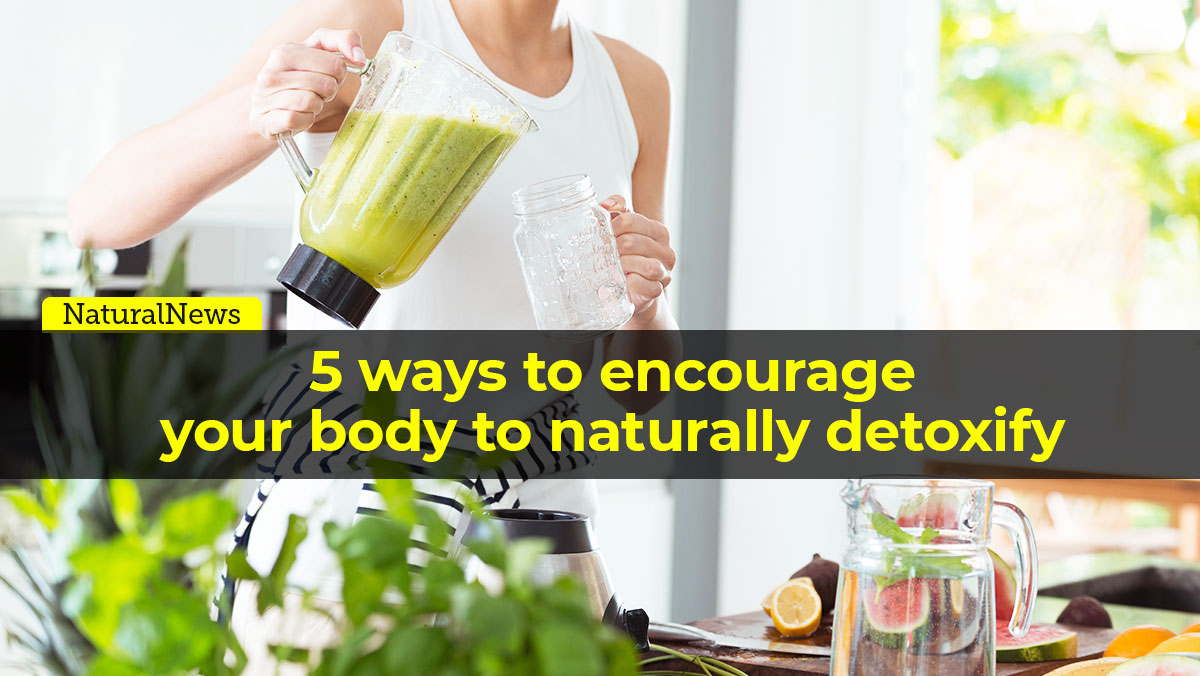
( Natural News ) It’s okay, you’re not the only person to fall off the wagon this summer, and whether you came out relatively unscathed or feeling like you’ve been run over by a tractor, it is probably time for you to get back into your regular routine of healthy eating. If you’ve never really had a healthy eating plan, then there’s no time like the present to get your butt in gear! So how do you approach your eating plan this time, and how do you get quicker results with the same amount of effort? Simply whip up these five foods and beverages daily, and you’ll be back in the saddle in short order. Smoothies The great thing about smoothies is that they can deliver so many bioavailable nutrients to various areas of the body with very little digestive capacity required. This not only gives your body a rest (especially if you have been eating BBQ and drinking a lot of liquor this summer) but it also helps support your body’s natural detoxification process. The key to a good smoothie for these purposes is to not make it too sweet, add plenty of bitter herbs and spices for your liver, and throw in a couple superfood powders to jack up the nutritional power. One of my favorites includes some frozen mango, lemon, lime, mint, turmeric, parsley, coconut oil, a bit of raw honey, some coconut milk, and pure water. Get the Health Ranger’s Organic Turmeric Root Powder , Fermented Super30 , coconut oil , and raw honey for the best results. For the full recipe, check out the Party Time Smoothie . Juices Perhaps the most popular way to take a load off the body, juicing has long been a great way to flood the body with highly […]
Top 8 ways most Americans severely compromise their immune systems

( Natural News ) One thing is for sure. More than 200 million Americans are completely paranoid about germs and bacteria to the extent that they’re brainwashed to believe that the human immune system is next to helpless without the assistance of a boatload of chemicals that come in the form of injections, pharmaceuticals, personal care products, and home and office “disinfecting” concoctions. The mass media has terrified most Americans that if they don’t get 50 vaccines by age 7, and boosters and flu shots regularly after that, they will die some horrific death from measles, chicken pox, shingles, polio, and influenza. The CDC has a couple hundred million “sheeple” convinced they need antibiotics in their gut, blood, and spread all over their bodies in order to keep away all those deadly germs. It’s all a Ponzi scheme to have consumers waste their money while actually severely compromising their immune systems, to the extent that they contract and spread the very infectious diseases, bacteria and viruses they were so paranoid about from the start. Imagine the irony. Meanwhile, the FDA allows thousands of toxins to enter the food supply, with barely any regulations on personal care products or cosmetics. Plus, most prescription drugs are manufactured with chemicals that cause side effects that are worse than the conditions and symptoms being addressed. It’s all an insidious, vicious cycle that’s well planned with lots of greedy investors making a fortune off sickly, immune-compromised consumers who beg for more chemicals, unaware of the dire consequences. Yes, it’s all very scary, and that’s why you must avoid the biggest pitfalls that are all marketed to do the opposite of what they really do. Get ready. Mother Nature’s micronutrient secret : Organic Broccoli Sprout Capsules now available, delivering 280mg of high-density nutrition, including the […]
Strong scientific evidence points to acupuncture as an effective treatment for anxiety disorders

( Natural News ) Could acupuncture be the solution to anxiety you’ve been looking for? The ancient practice of inserting needles into the skin may sound a bit daunting, but research has continued to confirm that this traditional healing art can offer a myriad of health benefits — including relief from anxiety. Recently published research has further examined the benefits of acupuncture in the treatment of anxiety, and the science is in: Acupuncture works. Best of all, the research team notes it doesn’t come with any harmful side effects — unlike pharmaceuticals. Acupuncture has been a part of traditional Chinese medicine for thousands of years. It’s been used to treat a variety of ailments throughout history, from back pain and headaches to premenstrual cramps, to vascular dementia. As Medical News Today explains , acupuncture is used to balance the body’s energy flow. And when it comes to anxiety, acupuncture may be an invaluable treatment option, though proponents of pharmaceutical intervention are loath to admit it. Acupuncture and anxiety A team of Portuguese researchers published their review of the science on acupuncture in the journal Complementary Therapies in Clinical Practice in May 2018. A total of 13 scientific studies were chosen for analysis, and what the team found was shocking: Despite mainstream medicine’s reluctance to accept alternative medicine as a valid practice, there is strong evidence to support the use of acupuncture in the treatment of anxiety. The research team writes, “Overall, there is good scientific evidence encouraging acupuncture therapy to treat anxiety disorders as it yields effective outcomes, with fewer side effects than conventional treatment.” 100% organic essential oil sets now available for your home and personal care, including Rosemary, Oregano, Eucalyptus, Tea Tree, Clary Sage and more, all 100% organic and laboratory tested for safety. A multitude of […]
Nootropics: The Curious World of Smart Drugs
Lifestyle Nootropics, also known as smart drugs, are the latest health craze, promising enhanced mental performance. You’ve likely seen these supplements in the health aisle or at supplement shops, with claims to boost your memory and focus, but do these mental enhancers actually work? Let’s break down the curious world of smart drugs. The term “nootropics” was first coined by Dr. Corneliu E. Giurgea, who is credited with developing piracetam, one of the most effective nootropics available. These supplements work by protecting the neurons in your brain, As you age, these neurons become damaged from toxins, leading to a decrease in certain areas of cognitive function. Fundamentally, nootropics work by stimulating these neurons, leading to an increase in blood and oxygen flow to your brain, though the way this is accomplished varies between different supplements. Brain enhancing supplements typically fall under two different categories: naturally occurring substances and manmade prescription drugs. Some examples of naturally occurring nootropics include caffeine, creatine, phenibut, ginkgo biloba, and many more. Manmade nootropics include Adderall, Ritalin, and over-the-counter products like Noopept. Since nootropics work in various ways, they are commonly taken in what’s known as “stacks” or basically combinations of different supplements. An example of a stack could include caffeine and L-theanine, both of which provide increased focus and energy. People who experiment with nootropics are sometimes referred to as noonauts. These people can essentially be compared to bodybuilders, except instead of working to optimize their muscle, they work to optimize their minds. On the nootropic subreddit, you can find an entire online community coming together to discuss anything from recommended stacks to new, up-and-coming supplements. Studies have shown that there are practical benefits to nootropics, but these benefits are difficult to explicitly pin down, considering each individual’s brain chemistry can react to these […]
Foods that prevent sun damage and heal your skin

( Natural News ) The largest organ in the human body is your skin, yet it is so often overlooked. Heart-healthy foods are all the rage, but really, nutrition affects your entire body – inside, and out. While our internal organs are very important, the skin that covers them needs love and attention, too. There are many nutritious foods that can help support healthy skin. In fact, with the right foods, you can help protect your skin against sun damage and other issues. Your skin is made of three main layers: The epidermis, the dermis and subcutaneous fat. The epidermis is the part of your skin that’s on top; it’s what you see everyday. Under that lies the dermis, which is much thicker. The dermis is where nerves, hair follicle roots and other important things like sweat glands can be found. Last but not least, there is the subcutaneous fat layer. Each layer of your skin is tasked with an enormous responsibility: Protecting everything underneath. Eating skin-healthy foods can help your skin be at its best. Here are some of the top foods you can eat to protect your skin and promote healing: 1. Tomatoes Tomatoes are a nutrient powerhouse, there’s no doubt about that. And when it comes to skin health, the benefits of tomatoes really shine. Lycopene, the antioxidant nutrient which gives tomatoes their brilliant red color, offers an array of health benefits. It is a carotenoid, and it’s been shown to actually help protect against sunburn and other types of sun damage. In one study, consuming high-lycopene tomato paste daily for 10 weeks was shown to reduce sunburn incidence. The power of the elements : Discover Colloidal Silver Mouthwash with quality, natural ingredients like Sangre de Drago sap, black walnut hulls, menthol crystals and more. Zero […]
Study: Exercise makes you younger on a GENETIC level

( Natural News ) Exercise has long been proven to slow down the aging process by supporting healthy organs. In addition to this, recent studies suggest that the effects of exercise can even be observed on the genetic level . Throughout a person’s lifetime, the cells undergo multiple rounds of cell division wherein DNA is replicated for each cell to have their own copy. However, each copy of DNA made is shorter than the last . To prevent important genetic information from being lost, the chromosome, which houses the DNA, is capped with a long stretch of DNA called telomeres. Aside from sacrificing itself for shortening, telomeres also protect the ends of the chromosome from damage and from unnecessary interactions. Although telomeres are not known to encode for anything, their shortening also poses effects on health. Telomere shortening has been linked not just to the aging process but also to the development of diseases. These links led to the belief that if telomere shortening were avoided then aging and diseases may be prevented. One study has shown that exercise preserves telomere length by increasing nuclear respiratory factor 1 (NRF1) levels. NRF1 functions by recruiting the enzyme telomerase to the telomeres . This enzyme has the ability to reduce telomere shortening. Unfortunately, only a small number of cells are able to produce it. The researchers observed that each session of exercise replenishes NRF1 concentration, effectively slowing the aging process. This means that it is necessary to exercise regularly for there to be significant improvements on the aging process. Mother Nature’s micronutrient secret : Organic Broccoli Sprout Capsules now available, delivering 280mg of high-density nutrition, including the extraordinary "sulforaphane" and "glucosinolate" nutrients found only in cruciferous healing foods. Every lot laboratory tested. See availability here. In addition to this, researchers from […]
15 Brain Foods You Should Be Eating Regularly to Keep Your Mind Sharp
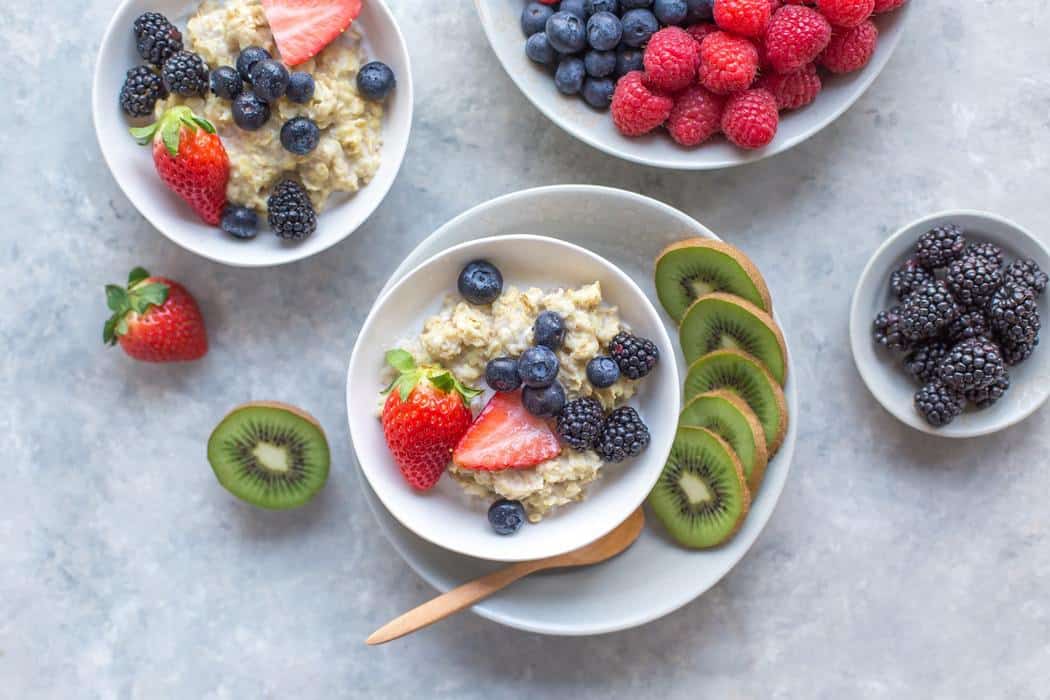
These days there are so many food choices. Every marketing trick is used to make you buy brain foods, all-natural, fat-free or gluten-free products. Could you blame them? They need to make a profit to keep existing and delivering their goods to the consumers. But does this mean that foods with these labels are just regular products or do brain foods really exist? That’s when research came in and proved that brain foods (meaning: foods that have a positive effect on the brain) really do exist. In this article, you will find 15 brain foods you should be eating to keep your mind sharp. 1. Blueberries One of the greatest gifts of Mother Nature; blueberries. Blueberries are known as the king of antioxidants [1] and are used to detox the body. There are not a lot of studies that tried to prove the relationship between blueberries and the improvement of brain function. But there’s one study that consisted of 9 elderly people. They found that consuming blueberry juice on a daily basis for 12 weeks improved memory function. [2] If this is not reasonable enough to include blueberries into your diet, you should read the following article on other benefits of blueberries: As with every single one of the brain foods listed here: Consuming more than necessary can also lead to side effects, this is the same with blueberries. [3] When including blueberries in your diet along with other brain foods; make sure to eat no more than 0.5 cups (4 oz./113 grams) a day. 2. Broccoli The first vegetable on the list, broccoli. Whatever you do with it; roast, steam, blanch or saute. [4] It will still improve the sharpness of your brain. There are two main nutrients in broccoli that makes it one of the brain foods […]
5 surprising ways your office is influencing your brain

You probably know that your office setup plays a considerable part in your productivity. Poorly lit offices, for example, can have a negative impact on your memory . Those of you who work in open offices probably have a gripe (or two) about your coworker’s loud chewing noise or your inability to make calls in private. But your office influences your brain in more ways than you think. And since you probably spend plenty of your waking hours there, you might not realize all the effects that it’s having on your mind. Here are five unexpected ways that your workplace can change your behavior—and what you can do when that shift isn’t for the better. You “catch” your colleagues’ negative moods Behavioral “contagion” is a phenomenon we all experience. Think about your friend who has taken on the opinions of his new partner, or the way that memes spread among teenagers like wildfire. Our brains are primed to seek out a “tribe” and to fit in, often by mimicking, or adjusting our thinking to align ourselves with other people– even if many of us don’t think that we do that . Studies show that everything from divorce to obesity could be “contagious.” This is a habit with deep, evolutionary roots. In the past, if we break away from our tribe, we might face life-threatening consequences. As a result, we developed a strong drive to prevent that outcome, and that defense mechanism has stayed with us. From a neuroscience point of view, 0ur sense of belonging is probably the single most crucial element to our being. Of course, when your colleague’s behavior inspires you to do your best work and be a better person, mirroring their actions can be beneficial. However, when it feels like your colleagues are constantly locking […]
5 foods that boost psychological well-being
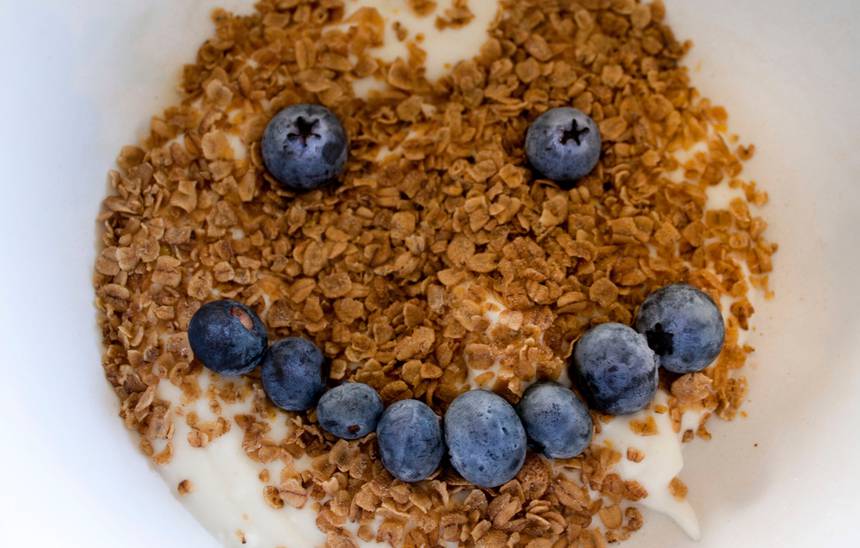
© Miriosti How to eat your way to wellness. Most of us know that what we eat has an effect on how our body feels. For me, binges of sugar and other refined carbs (I’m only human) leave me feeling enlarged and lethargic the next day. When I’m eating well – as in, not eating a box of cookies for lunch – I feel like a damn gazelle. (Which is amusing given my tall and not-so-graceful presence.) And of course, the long-term effects are pretty good too: decreased risk of ending up with things like diabetes, cancer, and heart disease. Food is our fuel, and it affects every part of our body – even the parts that are bit more esoteric than, say, our livers and hearts. Notably, write Joanne Bradbury and Megan Lee in The Conversation , healthy food is also good for our mental health and can decrease our risk of depression and anxiety. Mental health disorders currently cost $2.5 trillion dollars globally for various therapies and medications, according to Bradbury and Lee, a number so large that it’s hard to fathom. But with more and more research showing that a change in what one eats can decrease the development of mental health issues, it seems like a prudent approach to try. Of course there are plenty of people who need medication and this is not to say that they’d be fine if they started eating better – just that for many, changing the diet might be a great first approach for finding some emotional balance. And it’s an idea that is gaining traction. As Bradbury and Lee point out, Australia’s clinical guidelines recommend addressing diet when treating depression. Decreasing the consumption of medication has so many benefits; fewer side effects, less packaging and transportation of goods, […]
